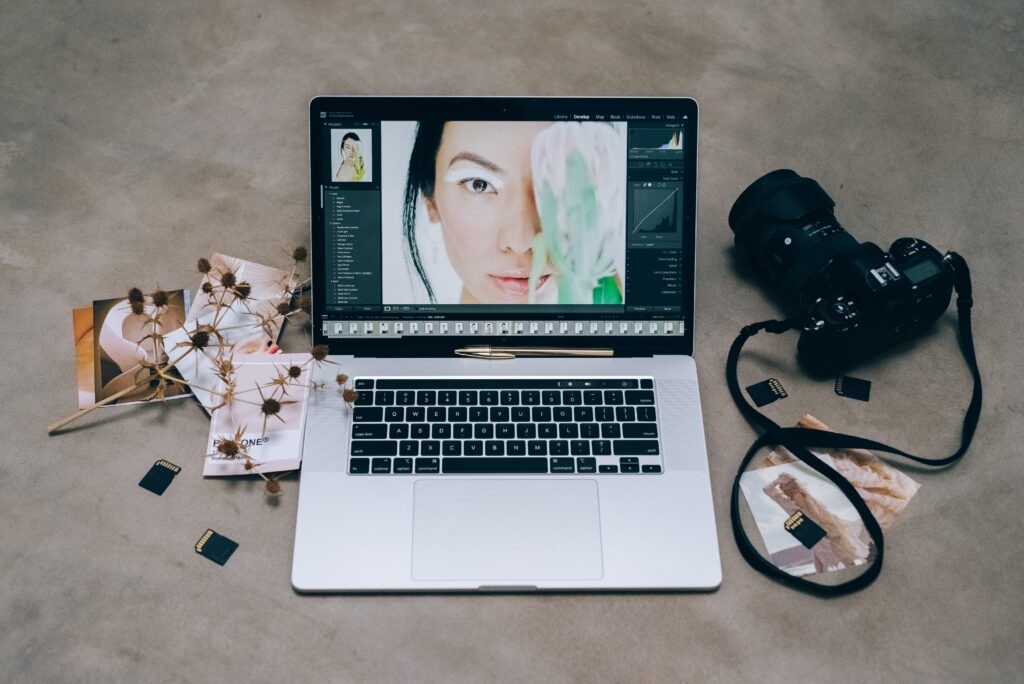Photographs are a fundamental portion of our lives. They capture memories, emotions, and moments that we cherish forever. But sometimes, even the best photographs need a little editing to enhance their quality, fix minor issues, or transform them into stunning works of art. This is where photo editing comes in. This article will walk you through the process of correctly editing images, covering everything from simple modifications to sophisticated methods.

1. Introduction
Photo editing is the process of altering or manipulating digital images using specialized software. It might be as easy as changing the brightness or as difficult as assembling an image from several sources. The availability of inexpensive software and potent smartphones has made picture editing more accessible to ordinary users in recent years. However, editing photos properly requires skill, creativity, and attention to detail. We’ll give you a thorough tutorial on how to correctly edit images in this post.

2. Understanding Photo Editing
Understanding the fundamental ideas and objectives of picture editing is crucial before we get into the specific technicalities of the process. Enhancing an image’s quality or changing it to produce a certain aesthetic or creative impression is the primary goal of photo editing. The key principles of photo editing include:
- Balance: achieving a harmonious composition by adjusting elements such as contrast, brightness, and color.
- Emphasis: directing the audience’s eye to the image’s focal points.
- Realism: maintaining a natural appearance while making necessary adjustments.
- Creativity: using editing tools to transform the image into a unique and compelling work of art.
Photo editing techniques
3. Choosing the Right Software
Choosing the right software is crucial for editing photos properly. There are several choices for picture editing software, ranging from cost-free applications to high-end programs. Here are a few well-liked choices:
- Adobe Photoshop: The industry standard for picture editing, Adobe Photoshop offers a large selection of tools and capabilities.
- Lightroom: a popular choice for organizing and editing large photo collections.
- GIMP is a free, open-source Photoshop substitute with comparable tools and functionality.
- Affinity Photo: a relatively new software with a comprehensive set of features and a one-time payment option.
Photo editing techniques

4. Basic Adjustments
The most popular methods of picture editing include simple tweaks, which may greatly raise the caliber of your photos. Here are some basic adjustments that you should know:
Brightness and Contrast
To change the overall exposure of an image, brightness, and contrast changes are used. Increasing brightness makes the image lighter while decreasing it makes it darker. Contrast adjustments affect the range of tones in the image, making it more or less vivid.
Color Adjustments
To alter the hue, saturation, and brightness of a single color or the entire image, color adjustments are utilized. Color modifications can be used to remove color casts, set a certain atmosphere, or boost the image’s brightness.
Cropping and Resizing
The composition and size of the image may be altered via cropping and scaling. Cropping is the process of removing unwanted parts of the image while resizing changes the dimensions of the image. Both can be used to improve the image’s overall composition and visual impact.
Straightening and Rotating
Straightening and rotating are used to adjust the image’s orientation. This is especially useful when the image was taken at an angle or if the horizon is not level. Straightening and rotating can make the image more visually appealing and balanced.
Red Eye Removal
Red-eye removal is used to fix the red-eye effect caused by the camera flash. The red-eye effect is when the pupils of the subject’s eyes appear red in the photograph. Most photo editing software has a red-eye removal tool that automatically detects and removes red-eye.

5. Advanced Editing Techniques
Advanced editing techniques are used to achieve more complex and creative effects. Here are some advanced techniques that you should know:
Exposure Correction
Overexposed or underexposed photos can be fixed with exposure correction. By altering the image’s brightness, contrast, and exposure settings, this may be accomplished.
Sharpening and Blurring
The image’s sharpness and blur levels can be altered using sharpening and blurring. Sharpening makes the edges of the image more defined while blurring softens the image’s edges. These tools can be used to enhance certain aspects of the image or to set a certain atmosphere.
Noise Reduction
The amount of noise in the image is reduced via noise reduction. Noise is the visual distortion that appears in images taken in low light conditions. The noise in the image is automatically reduced using the noise reduction function found in the majority of photo editing applications.
Clone and Healing Tools
Clone and healing tools are used to remove unwanted objects or blemishes from the image. The clone tool copies a specific part of the image and pastes it over the unwanted object, while the healing tool blends the unwanted object with the surrounding area.
Photo editing techniques
Layers and Masks
Layers and masks are used to create more complex compositions and effects. Although masks are used to carefully apply effects to particular portions of the picture, layers allow you to stack numerous images or items on top of one another.
HDR and Panorama
To create images with a border range of tones and a greater field of view, HDR(High Dynamic Range) and panoramic procedures can be used. Whereas panoramas combine numerous photographs taken from various angles to produce a broader field of view, HDR combines multiple images taken at various exposures to generate a single image with a wider range of tones.
Black and White Conversion
Black-and-white conversion allows color photos to be turned into monochrome images. This technique can create a more dramatic and timeless effect and is often used in artistic or documentary photography.

6. Tips and Tricks
Here are some additional tips and tricks to help you edit photos properly:
Saving and Exporting
Always save your original image before making any edits, and export the final image in the appropriate format and resolution for your intended use.
Working with RAW Files
If your camera supports RAW files, use them to have more control over the editing process and maintain the image’s quality.
Photo editing techniques
Keyboard Shortcuts
Learn the keyboard shortcuts for your preferred photo editing software to save time and streamline your workflow.
Batch Processing
Use batch processing to apply the same edits to multiple images at once.
Presets and Filters
Use presets and filters to apply pre-designed effects to your images and save time on editing.

7. Conclusion
Editing photos properly requires skill, creativity, and attention to detail. Following the guidelines, strategies, and advice provided in this article can produce eye-catching photographs that will catch your audience’s attention. Remember to always keep the original image and export it in the appropriate format and resolution for your intended use. Try different editing techniques and enjoy the process.
Photo editing techniques
READ ALSO:-How to make fish eye effect in Photoshop
8. FAQs
1. How do I know when to stop editing my photo?
Ans:-You should stop editing your photo when you feel that it meets your desired outcome and looks visually appealing.
2. Is it necessary to edit every photo?
Ans:-Not all of your images need to be edited, although editing can improve their quality and impact.
3. Can I use mobile apps for photo editing?
Ans:- Yes, there are many mobile apps available for photo editing that offer basic to advanced editing features.
4. How can I pick the best photo-editing program for me?
Ans:- Choose a photo-editing program that meets your goals, degree of expertise, and financial constraints.Research and read reviews before making a purchase.
5. How can I find out more about altering photos?
Ans:- You may learn more about picture editing methods and best practices by taking advantage of the numerous online tutorials, classes, and workshops that are accessible.




